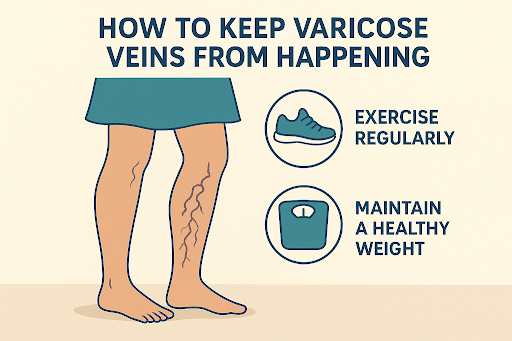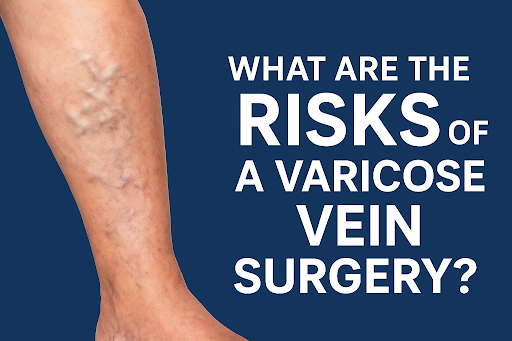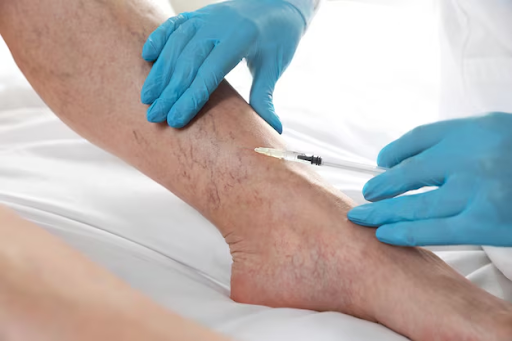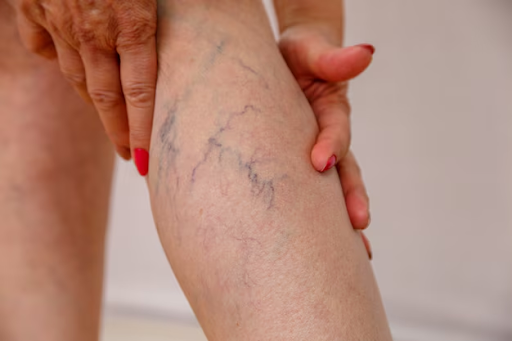Do your legs ache, hurt, or feel heavy after being on your feet all day? You may have begun to see bulging, twisted veins on your legs or unusual colour changes in your skin around the ankles. If that’s the case, you’re not alone, and you might be experiencing signs of varicose veins. Many people eventually consider options like varicose vein treatment Stroudsburg or professional vein treatment to find relief.
But the good news is that there are simple, everyday things you can do to stop varicose veins from occurring or worsening. Whether your work requires hours of standing or you’re just beginning to see changes, this guide is filled with sensible tips to safeguard your vein health and feel better on your feet.

How Prolonged Standing Affects Vein Health
Let’s start with what happens inside your body. Your veins carry blood back to your heart. But in your legs, gravity pulls against this process. To assist, your leg muscles function as pumps, and tiny valves within your veins ensure the blood moves up in the proper direction.
When you stand all day, those valves are under stress. Eventually, they can be weakened or damaged. From that point forward, blood begins to pool in the veins rather than travelling upwards. That’s when veins have the potential to become swollen, twisted, and visible beneath the skin; varicose veins.
Healthcare, retail, education, or factory work jobs are particularly famous for this. Anyone with a job that entails standing all day and wants to prevent varicose veins should carefully notice symptoms and preventive factors. Patients often seek help through Vein Treatment Wilkesbarre for long-term care.
Early Symptoms to Watch For
Identifying the signs early on allows you to prevent varicose veins from progressing. Here are some of the typical symptoms to look out for:
- Aching or throbbing legs after standing
- Visible veins that appear enlarged or bulging
- Restless legs during the night or a desire to move them
- Swelling, particularly in the ankles or feet
- Skin changes; dryness, discolouration, or redness near the ankles
Even if your veins aren’t outwardly bulging yet, these warning signs are your body telling you, “Something’s not right.”
Daily Habits to Prevent Damage
How you move, sit, or stand throughout the day can make a big difference. These healthy vein tips are simple to incorporate into your daily life and can help reduce your risk:
Change Your Position Often
If you stay in one place for too long, blood will pool in your lower legs. Attempt to shift your weight from leg to leg, do calf raises, or take a quick walk whenever possible. A little movement every 30 minutes can stimulate circulation.
Find Time to Exercise
Walking, biking, or doing yoga for 20–30 minutes a few times a week helps your muscles pump blood more effectively. Consistent movement also strengthens your heart and leg veins, which can prevent varicose veins in the long run.
Keep a Healthy Weight
Excess weight increases pressure on your legs and veins. Reducing even a small percentage of body weight relieves this pressure and enhances circulation.
Dress in Comfortable Clothing and Shoes
Skinny jeans around your waist, thighs, or calves may reduce the blood supply. High heels keep your calf muscles contracted, limiting the blood-pumping action. Replace them with supportive, low-heeled shoes to safeguard your vein health.
Don’t Smoke
Nicotine destroys blood vessels and harms circulation. Giving up smoking does more for your heart and lungs. It also does good for your veins and cuts your chances of getting varicose veins on the job or otherwise.
Best Footwear, Breaks, and Exercises
If your job requires you to stand all day, your legs work overtime. Here are some practical hints for healthy veins targeted specifically at work-life:
Wear the Right Shoes
Soles that offer support, proper arch support, and soft cushioning make a big difference. Steer clear of heels higher than 2 inches. Your shoes should enable you to stand upright without exerting your legs.
Take Breaks
Attempt to get off your feet for a few minutes each hour. Raise your feet slightly during your break. This allows blood to flow upwards and relaxes your veins.
Easy Exercises at Work
- Calf raises
- Ankle rotations
- Marching in place
These can be done discreetly during the day and are incredibly effective for standing all day and for vein health.

Long-Term Prevention Strategies
If you’re serious about protecting your legs, these long-term strategies can help reduce your chances of developing severe symptoms or needing medical treatment.
Wear Compression Stockings
Compression stockings apply gentle pressure to your legs and help blood move in the right direction. Many people with varicose veins at work use compression stockings daily. Make sure to get the right size and type, ask your doctor or pharmacist for guidance.
Elevate Your Legs Regularly
After a workday, recline and elevate your legs above your heart for 15–20 minutes. This drains any accumulated blood and reduces pressure in the veins. It’s a simple and effective method to prevent varicose veins from developing.
Consider Medical Treatments
If symptoms continue despite everything, there are non-surgical treatments available.
- Radiofrequency or Laser Ablation: These employ heat or light to close off troublesome veins.
- Sclerotherapy: A liquid is injected into the vein to shut it down.
They are quick, effective, and tend to have little or no downtime – ideal for individuals with busy careers who can’t take time off to heal. Clinics offering varicose vein treatment Stroudsburg, Vein Treatment Bethlehem can provide these advanced options.
Conclusion
Your legs work so hard for you daily. Whether you’re trekking through hospital corridors, waiting in a classroom, or staffing a retail job, they are worth attention and care. Varicose veins are prevalent, but they are not something you need to endure as part of the job.
With everyday activity, proper footwear, breaks, and a little mindful lifestyle adaptation, you can avoid varicose veins and maintain healthy, strong legs, full of energy, and in good condition for the long term.
Don’t wait for the pain to begin or for your veins to bulge. Begin taking minor steps today to promote vein health, as prevention is always so much easier than cure. And if needed, explore professional options like vein treatment in your area for lasting relief and comfort.







